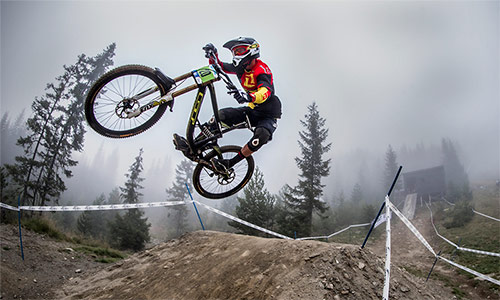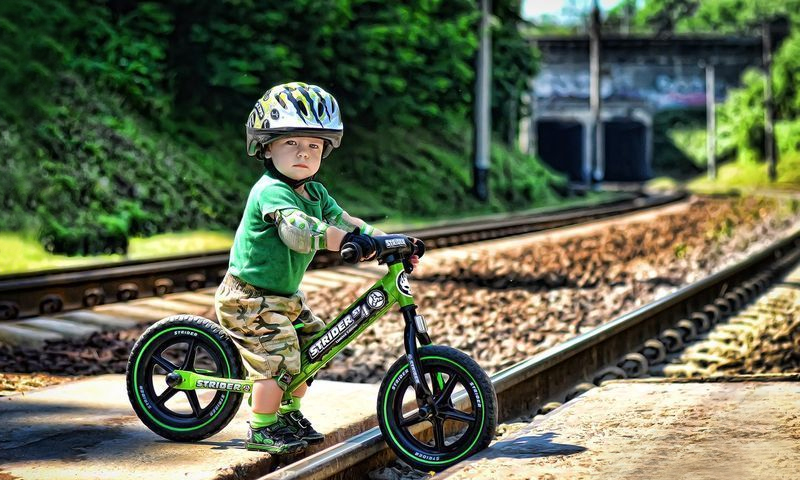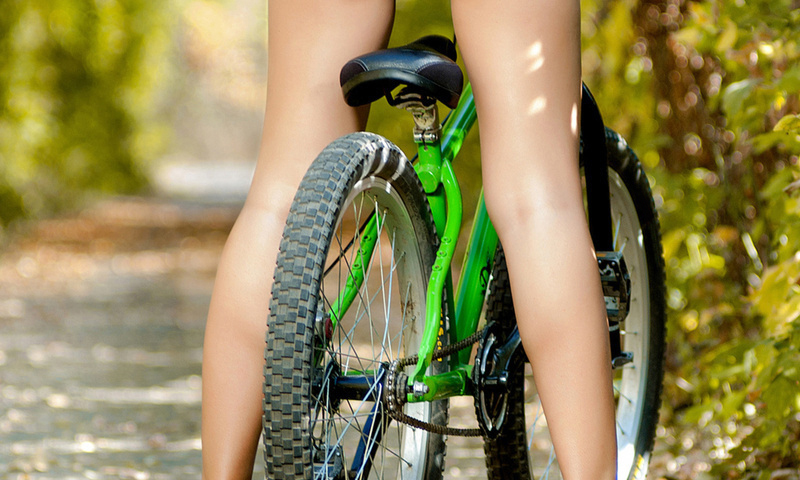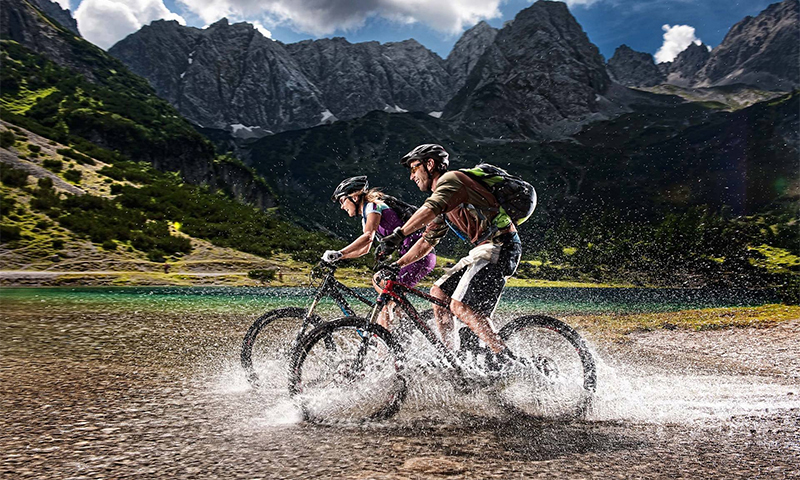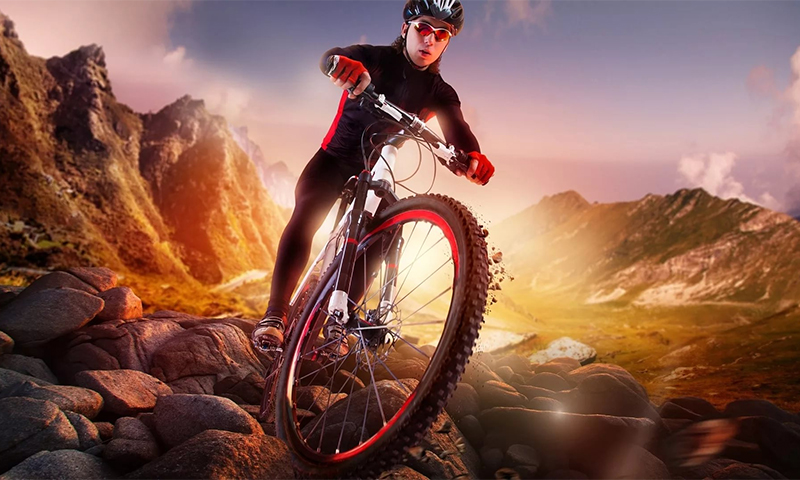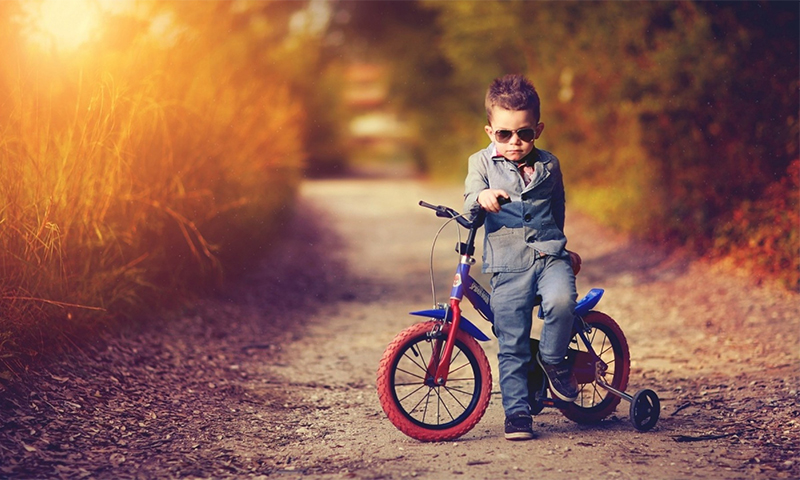Recently, many have moved to an environmentally friendly and healthy transport - a bicycle. Now not only children and young people drive on two wheels. Adult uncles and aunts also buy their own bicycles: for walking, playing sports and even commuting to work (it's better than spending hours hanging around in traffic jams). True, these categories of citizens usually need different models. It makes no sense to buy a mountain bike to conquer asphalt, and the road-builder simply cannot develop a phenomenal speed on a country primer. Therefore, today we will learn to choose a bike for your needs and riding style.
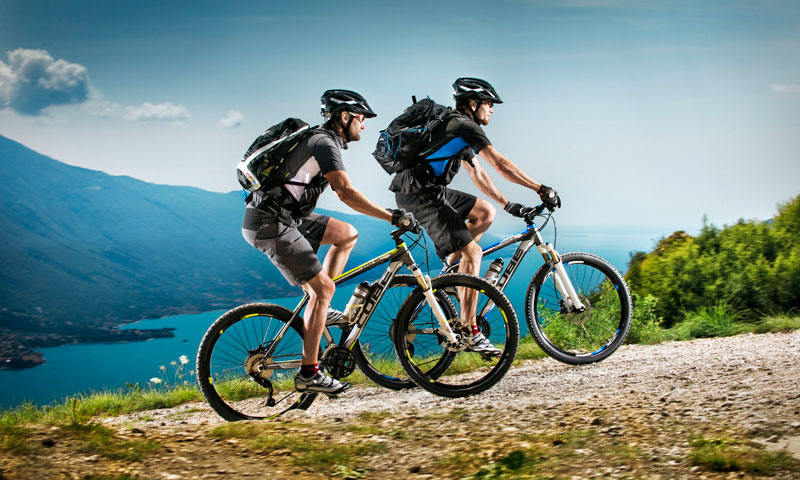
Content:
The best bicycle manufacturers - which company to choose
When choosing a bike brand, you choose its quality, so you need to start the search from the name on the frame. However, a lot here depends on the use of two-wheeled transport. For example, Stels has good urban and recreational models, but mountain biking lovers treat this company with disdain.
Excellent bicycles of different directions are produced by the following companies:
- Author
- Gt bicycles
- Giant
- Merida
- Forward
We have already considered models of these manufacturers in a recent ranking of the best bikes, and if you are reluctant to deal with technical nuances, you will surely find your bike there. The rest will be useful to read about all the intricacies of choosing a good bike.
The principle of operation and device bike

Any bike consists of several main parts: the frame, steering, wheels, pedals and chain drive. Consider their features and principle of interaction.
The frame is a rigid truss, welded from pipes. All other elements of the bike are attached to it, but its design itself may have some differences.
If she is very high and goes at a slight angle to the surface of the earth, then we have a male model in front of us. In women, it is attached not under the saddle, but closer to the carriage, so that when landing it does not throw the leg over the top.
Also, the frames may differ in the number of installed shock absorbers:
1. Rigid - the easiest and cheapest bike with a rigid frame, that is, without suspensions.
2. Hardtail is a widespread version with a damped front fork, which reduces shock and vibration loads on the hands.
3. Dvukhpodvesh - the softest and most comfortable type of bicycle frame, where the dampers are and the back and front. The only drawback - these models have strict limitations on the weight of the rider.
At the bottom of the frame is a carriage where the pedal rods are inserted. By alternately pressing them, you turn the gear on which the chain is worn. It transmits the force to the rear wheel sprocket and makes it rotate.
The wheel of the bicycle below forks, forming a fork. To its ends is attached to the axis of the front wheel, which sets the direction of motion. All he does is turn left and right. Also here are the tabs for controlling the brakes (they lock the rear or both wheels at once) and gearshifts, if any.
In multi-speed sports bikes, as well as some cruisers, an additional transmission is installed: a system of stars with different gear ratios, which allows increasing or decreasing the transmitted force to the wheels by throwing the chain.
Bicycle types
Mountain (MTV)
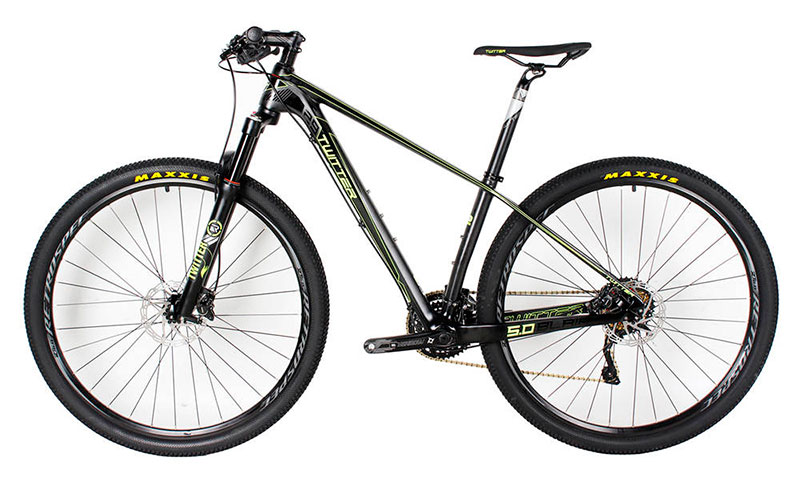
First of all, they are distinguished by a rather short frame and a large wheel diameter - it should not be less than 26 ″, although not too tall athletes and teenagers will be more comfortable on 24-inch rims.
Also here the carriage is raised quite high, due to which the ground clearance is increased. All this makes it easy to overcome serious obstacles on mountain routes without getting up from mountain biking.
Pros:
- Maximum strength and durability of the frame;
- A large number of speeds (minimum 21);
- Excellent cross-country ability in off-road and cross-country conditions;
- High quality working mechanisms;
- The tenacity of the wheels on the mud and sandy sections of the road;
- Suspension with long stroke fork.
Minuses:
- A good mountain bike cannot be cheap;
- "Sports" fit, requiring muscle grouping;
- Inconvenient narrow saddle.
- See also: Best mountain bikes
Universal (tourist, all-round MTB)
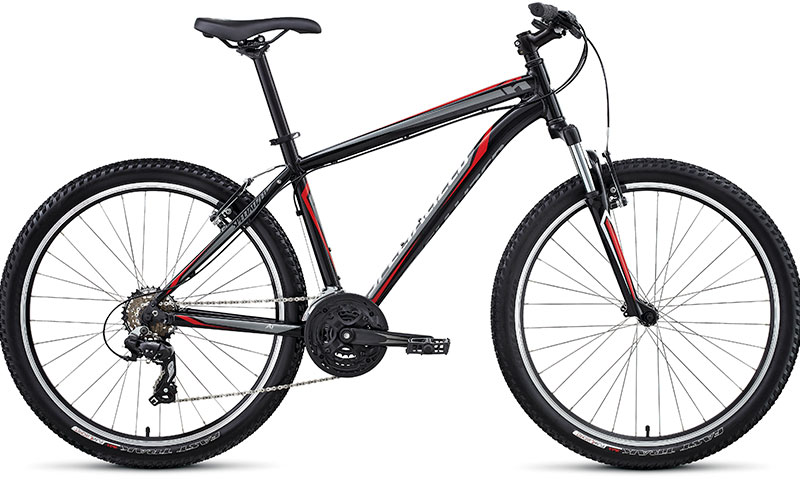
They represent a simplified version of mountain biking, equally well adapted for driving on flat tracks and off-road. Landing is often direct, but if the speed is more important for you, you can choose a model with a large steering wheel removal. Well, if its angle and height will be adjustable.
Pros:
- Sufficient permeability;
- Good safety margin of the frame;
- Depreciation of the front fork - about 80-100 mm;
- Gear shifting (usually between 21-24);
- The ability to install the trunk;
- Affordable price.
Minuses:
- Not fully mountain bikes.
Road race
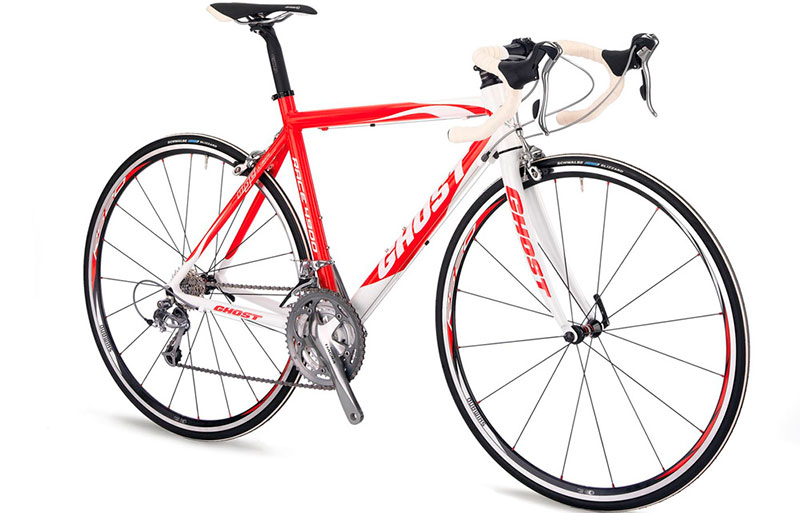
Another type of sports bike with a rigid frame and a curved down steering wheel. On such shells always put big wheels with a diameter of 28-29 ″ with narrow tires without a pronounced tread. These models are created exclusively for fast driving on a flat road.
Pros:
- Low weight;
- The absence of shock absorbers allows you to not waste forces on the buildup;
- Good gain and hold speed;
- The presence of transmission;
- The maximum range of gear ratios on asterisks.
Minuses:
- Not suitable for off-road - quickly break;
- Minimum comfort for the rider.
City (city bikes)
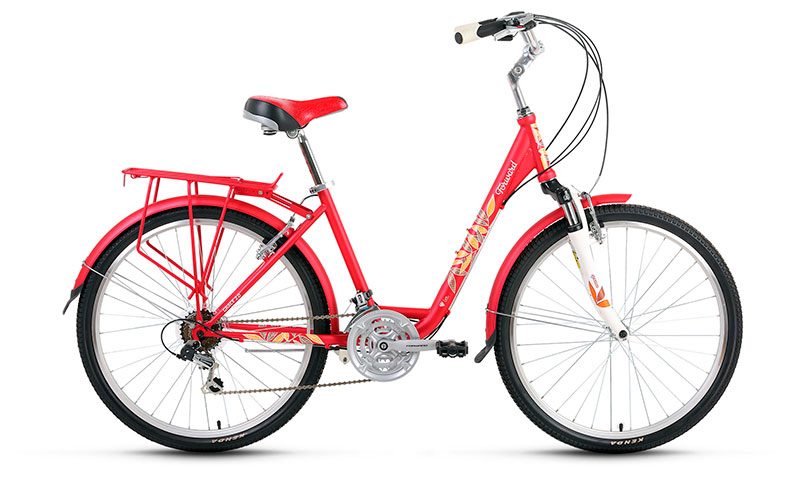
Comfortable walking bike with vertical landing. There are no serious mechanisms here - even the transmission may be absent (or total only 3–7 speeds). But such bikes require only a comfortable and unhurried ride within the city limits, so the hinge minimalism is justified in our case.
Most urban models have additional lining and protection, and all the cables here are removed in the cavity of the frame. On the one hand, it protects the work units from dirt, moisture and damage, on the other hand, it complicates repair and maintenance in case of serious problems.
Pros:
- Simplicity of a design and undemanding in leaving;
- Average weight;
- The presence of the trunk and / or front basket;
- Wide and comfortable saddle;
- Big wheels.
Minuses:
- Primitive brakes;
- Lack of shock absorbers.
Baby

A separate category of transport, however, is structurally very similar to urban and, occasionally, tourist models. Such bicycles, in addition to size, are distinguished by a short frame and a curved wheel, which ensures a comfortable fit for the child with a straight back. They always have small wheels from 12 to 20 ″ (for teenagers up to 24 ″) and the simplest foot brake.
Pros:
- Affordable price;
- Wide possibilities of adjusting the height of the steering wheel and seat;
- Simplicity of design;
- On the rear axle there are attachments for an additional pair of wheels.
Minuses:
- The low strength of the frame, although the weight of the child, it can easily stand;
- Lack of suspension.
- See also: Best tricycles for kids
Bike selection options
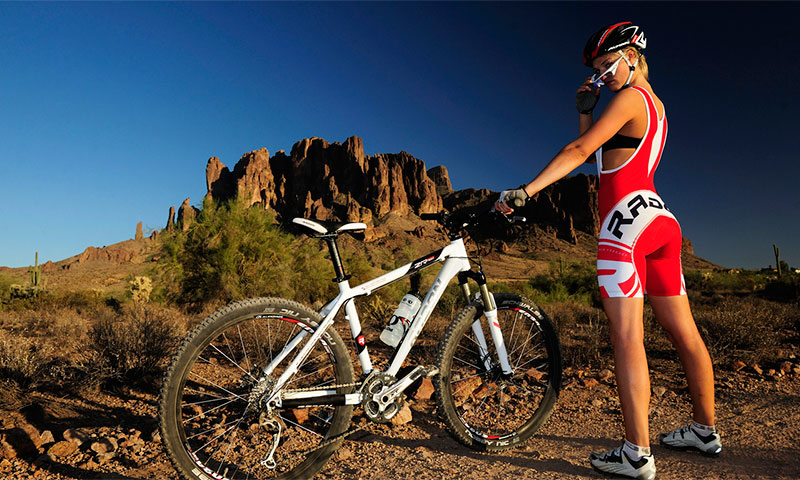
In this section, we consider only the most important elements of the bicycle construction, omitting a number of small parts. The type of seat, thickness and profile of tires, the type of pedals - all this is important, but if necessary, they are easy to change. Focus on the parameters that the bike should have initially.
Frame height
This is the first thing that you need to pay attention to when choosing a particular transport - if the frame does not match your height, you cannot achieve a comfortable fit.Usually, the size of a bicycle is understood as the distance from the central axis of the carriage (where the connecting rods of the pedals are fastened) to the cross under the saddle.
Thus, the frame size is tied to the length of the rider's leg. But in the tables of manufacturers indicates the overall growth of the "average" person, so you always need to make an amendment, taking into account its constitution, and it is better to try on a bicycle for themselves.
Manufacturing material
This parameter is important for athletes and extreme lovers, as they most actively exploit their bikes and give maximum loads on the frame. For urban or park riding material is not decisive.
On sale more often there are bicycles with such frames:
1. Steel - inexpensive, heavy and require maintenance, otherwise the appearance of rust can not be avoided.
2. Aluminum - durable and light, not afraid of water, but require a suspension. In addition, their service life is less than that of steel.
3. Chromomolybdenum - the golden mean. Relatively affordable, they are distinguished by low weight and moderate corrosion resistance.
4. Titanium, carbon and magnesium frames. This material is used only in the production of expensive professional bikes.
Weight
How much your bike will weigh depends on the material of the frame, attachments, size and performance of the wheels. Here we will have to take into account the conditions for the use of two-wheeled transport, and the need to carry it on yourself (for example, to lift it to the floor).
Of course, manufacturers are trying in all models to reduce weight to a reasonable minimum, but you should focus on these figures:
- For city bikes, the norm is 15 kg;
- Tourist hardtails should weigh a little less - at least 13.5 kg;
- If you need a maximum speed on a flat track or a bike you will often have to carry in your hands, look for a model no heavier than 10 kg.
- Downhill dvuhpodvesy for speed descents will weigh from 15 to 20 kg.
Shock absorbers on the plug
Depending on the class and purpose of the bike, the shock absorbers may be:
1. Spring - the most simple, installed on urban and children's models. They serve for a relatively short time, because over time the springs lose some of their properties. But if you do not plan to ride on the bumps and off-road, such shock absorbers are more than enough.
2. Elastomeric - in addition to the spring inside have an elastic rubber rod, absorbing shocks. Unpretentious and reliable enough, but the effect of depreciation is small (too short move).
3. Oil - are hydraulic glasses filled with a viscous liquid. May have a shock-absorbing spring inside, if the weight of the rider fits in the range from 70 to 100 kg. At other loads, it is better to choose air-oil glasses, allowing you to adjust the fork stiffness.
4. Air - expensive, but too capricious shock absorbers. Suitable only for bicycles that ride on roads without major obstacles. But with them the course of the fork can be adjusted to any weight.
Also, when choosing, you should pay attention to the ability to completely block the operation of the shock absorber and set the preload - adjust the rigidity of the preloaded fork, taking into account the weight of the rider.
Brakes
Manufacturers, individually or in different combinations, offer us a choice of 4 options:
1. Pedal (foot) - the brake in the carriage is activated when the pedals are reversed. This is convenient because you do not need to additionally use your hands. In addition, you can use it to control the braking force or slow down a little. Alas, such brakes in an emergency situation are late, and sometimes they simply scroll, but they work equally in all weather conditions.
2. V-brake - when triggered, they clamp the wheel rim, but only if it is dry and has the correct shape. In the cold pads harden and worse inhibit. Similar problems arise when you drive through puddles or dirt — gum just slips. But in maintenance and tuning they are simple and low-cost - even regular replacement of “eaten” shoes is inexpensive.
3. Disk mechanics - when triggered, locks the wheel hub, not the rim. Due to this, it remains effective, even if we catch the G8. Such a system does not harm the wheel and does not require frequent maintenance.
4. Disk hydraulics - the best and most expensive type of bicycle (and motorcycle) brakes, working in all conditions. The only drawback is the complexity of the settings and the inability to repair "in the open field".
If you choose disc brakes, pay attention to the diameter of the rotor specified in the specifications. The norm is 160 mm, but the larger its size, the more efficient the system.
Transmission
This item is relevant for those who choose MTV or city bike with multiple speeds. In the first case, the number of stars should provide at least 21 speeds, but professional athletes prefer bikes in which at least 24 gears. On the same model, 7 is enough - the rest you will not use anyway.
Durability and clarity of the transmission depend on a series of attachments. Here it is best to choose models of manufacturers Shimano or SRAM, paying attention to the class of front and rear switches (the latter is more important).
- A simple Shimano Tourney system is enough for a city or teenage bike.
- For recreational shimanovskie Altus, Acera (Alivio on more serious models) or their analogues SRAM X3 and X4.
- On tourist bikes they put switches of at least Shimano Deore and SRAM X5 class.
- For extremes fit Shiman's Saint.
- Professional athletes and racers will need Japanese switches of the most advanced SLX or XTR series - their American counterparts are SRAM X7, X9 and X0.
In addition, pay attention to the design of the maneuvers, through which just have to switch speeds. If this is a gripshift (rotary knob), you will not have problems with accidentally turning on the gear, but on budget models it is hard to roll it over without gloves. Lever shafts in this regard are much more comfortable, although at times they start to dodge. But the final choice is a matter of taste and habit.
Which bike to choose
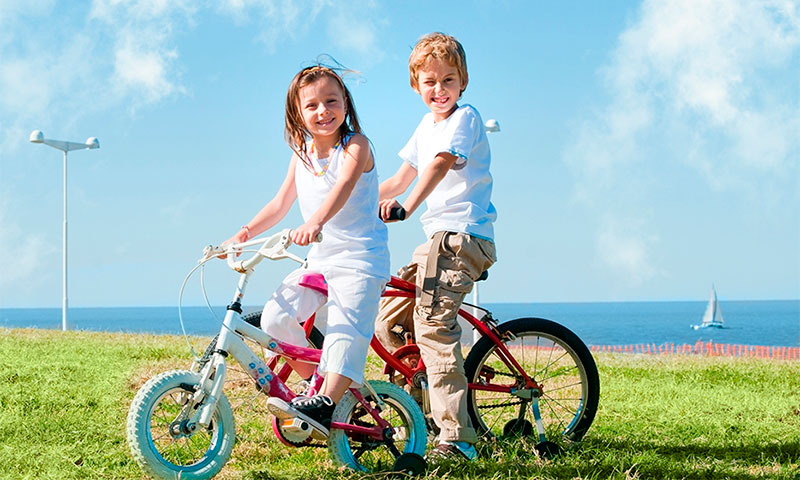
1. For extreme lovers and lovers of technical speed descents will need an expensive two-suspension with an extended frame geometry. Brakes - only hydraulics disk, front fork stroke not less than 150 mm. Big wheels are also needed here: from 26 ″ to Niners (29 ″) with a wide and powerful tread for better traction. Attachments must be professional - not a class of SRAM X7 or at least Shimano Saint.
2. For cross-country (off-road trips) and aggressive urban pokatushek with the passage of the steps and jumping from the curb, choose a hardtail on a chrome-molybdenum frame. The optimum fork travel for you is 100–130 mm, 26 wheels will be enough - this will ensure both good throughput and the bike’s normal maneuverability in urban environments. The transmission class should be not lower than Deore and X5, but if you plan to ride on “black” tracks, raise the bar to a professional body kit.
3. For long trips along country roads, highways and city streets, you should choose a universal mountain bike - a rig or hardtail with a lockable plug, so as not to waste your energy on swinging the suspension. Also here you need fast and knurling wheels of large diameter with poluslik- or slick-tires - they have a good resource, and replacement will be needed soon.
4. If the bike for you is just a means of transportation around the city to the place of work or study, take a compact city bike with a low female or unisex frame. It is better to choose the material easier (chrome-mole or aluminum alloy), the wheels are also looking for a small diameter of about 20 ″. Transmission is optional, but if there are a lot of descents and ascents on your daily route, you should look for at least the most simple kit with a minimum speed.
How much is a bike
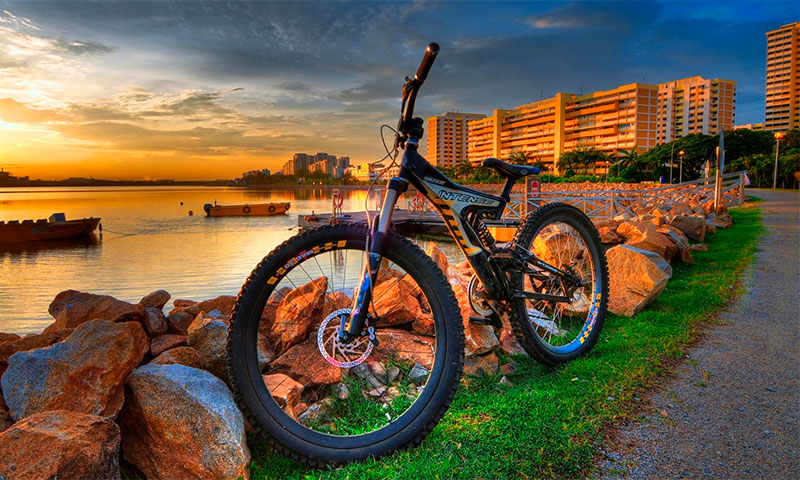
1. Mountain hardtail for a teenager can be bought for 7–45 thousand rubles, similar models for adults at the same price threshold fall to half a million.The maximum cost of two-suspension is even higher - up to 660 thousand rubles. Universals are sold from 15 to 200 thousand.
2. Tourist bicycles with a steel frame can be bought for 7–25 thousand rubles, with aluminum - in the range of 15–110 thousand. Medium for the price option - chrome-molybdenum alloy (from 17 to 50 thousand)
3. A city bike for an adult will cost at least 4–5 thousand, advanced models from top manufacturers can cost up to 160 thousand. Teenage sit-ups are in about the same price category, except that the “ceiling” for them is significantly lower - at the level of 50,000 rubles.
4. The cheapest road bike with a steel frame will cost about 14 thousand rubles, for aluminum rig you will have to pay from 20 to 140. Carbon road-goers start from 70-80 thousand rubles. and reach 800 thousand.
5. An ordinary bicycle for a child over 3 years old can be bought for 2000–4000 rubles. Children's copies of "adult" models from well-known companies can reach up to 28 thousand.
It will be interesting to friends too



